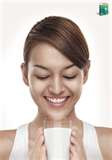-It is a systemic, planned performance of bodily movements, postures or physical activities intended to provide a patient with the means to:
#Remediate or prevent impairments
#Improve, restore or enhance physical function
#Prevent or reduce health- related risk factors
#Optimize overall health status, fitness or sense of well- being
ASPECTS OF PHYSICAL FUNCTION
§ Balance
§ Cardiopulmonary fitness
§ Coordination
§ Flexibility
§ Mobility
§ Muscle performance
§ Neuromuscular control
§ Stability
§ Postural control
COMPONENTS IN THERAPEUTIC EXERCISE
ACTIVE MOVEMENT
§ Active movement is the movement of the segment within the unrestricted that is produced by active contraction of the muscle crossing that joint.
GOALS:
§ Maintains physiological elasticity and contractility of the muscles
§ Provides sensory feedback from the contracting muscles
§ Provides stimulus for bone and joint tissue integrity
§ Increases circulation and prevent thrombus formation
§ Develops coordination and motor skills for functional activities
§ Maintains the range of motion
§ Maintains joint flexibility
§ Stimulates proprioception through closed- kinetic chain exercises
§ Maintains cardiovascular
ADVANTAGES:
§ Restores range of motion within 80% of normal in the unaffected limb
§ Restores joint flexibility as observed in the unaffected limb
§ Begins proprioceptive stimulation through closed isotonic chain exercises
§ Begins pain- free, isometric strengthening exercises on the affected limb
§ Begin unresisted , pain- free functional patterns of sport- specific motion
§ Maintains cardiovascular endurance
INDICATION:
§ Decreased or lack of strength
§ Decreased or lack of muscular endurance
§ Substandard coordination
§ Loss of musculoskeletal functional integrity
CONTRAINDIATION:
§ Joint effusion
§ When motion is disruptive to healing process (acute tears, fractures, surgery, dislocations)
§ Muscular inflammation
§ Fever/ active infection (systemic or local)
TYPES OF ACTIVE MOVEMENT:
1. FREELY
· Movement of the segment within the unrestricted range of motion that is produced by active contraction of the muscles crossing t hat joint
2. FREELY ASSISTED
· When the therapist adopts the grips as for passive movement and assisted the patient to perform the movement
3. FREELY RESISTED
· When mechanical or manual resistance is applied. The mechanical resistance maybe perform as weights, springs, auto loading or the mode of performance of the activity
PROCEDURES TO APPLY:
1.EXAMINATION
· Examine and evaluate patient impairments and level of function, determine any precaution and prognosis and plan the intervention.
-Ability of the patient to participate
-Decide the best can be meet the goals of:
# Anatomical planes of motion
#Muscles range of elongation
#Combined patterns
#Functional patterns
-Determine the amount of motion
-Monitor patient’s condition and response like vital signs, body temperature, skin colour and others
-Document and communicate finding and intervention
-Re- evaluate and modify the intervention as necessary
2.PATIENT’S PREPARATION
-Communicate with patient
-Free the region from restrictive clothing, linen, splints and dressings
-Position the patient in comfortable condition with proper body alignment
-Proper body mechanics for the therapist
3.APPLICATION
-Patient will perform the movement as by the motion of active movement
-Provides assistance only when needed for smooth motion
-Motion is perform within the available range of motion
MODALITIES USED



















